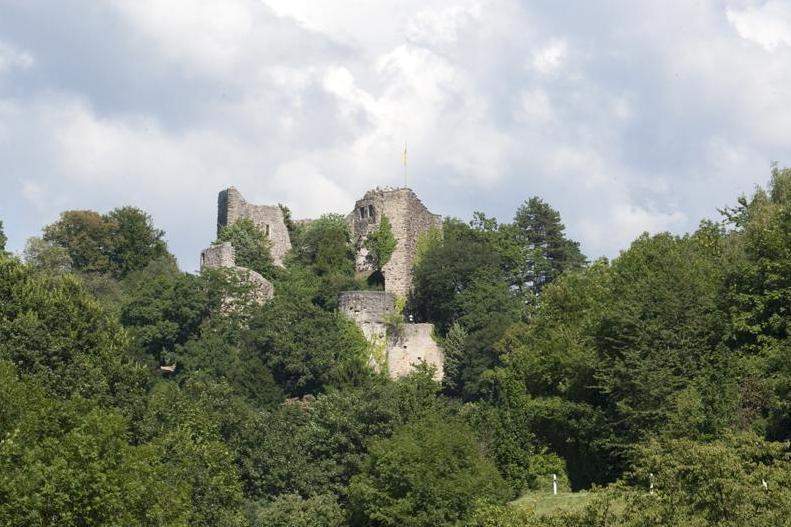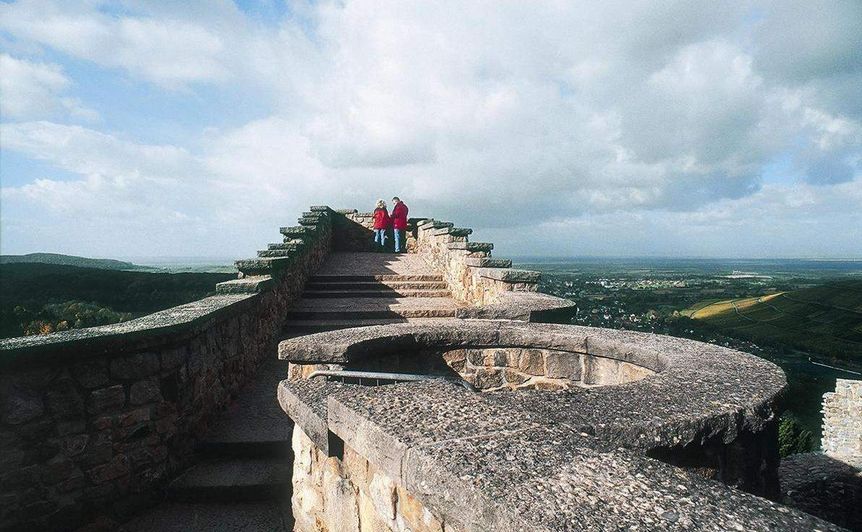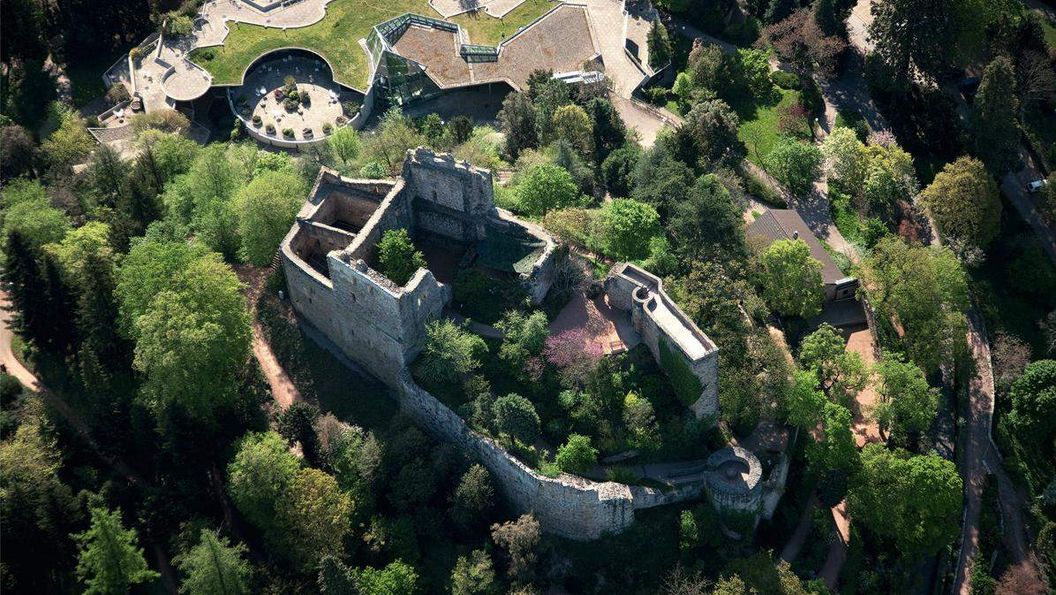A strategically positioned fortress
The surviving core of the castle dates from the early 12th century. Its oldest and most striking feature is the Palas, or great hall, with late Romanesque arched windows. Because materials from the Roman spa were used in its construction, it was long believed that the castle itself was also of Roman origin. Initially built to protect the surrounding silver mines, Badenweiler Castle passed into the possession of the margraves of Baden in 1503. It was then expanded to become one of the region’s major strategic fortresses. In 1678, however, it was besieged and subsequently destroyed by departing French soldiers in the Dutch War. The castle was not rebuilt and fell into disuse. To protect the ruins from dilapidating further, and to make them safe for tourists, they underwent restoration in 1982 and further works in 2004.





